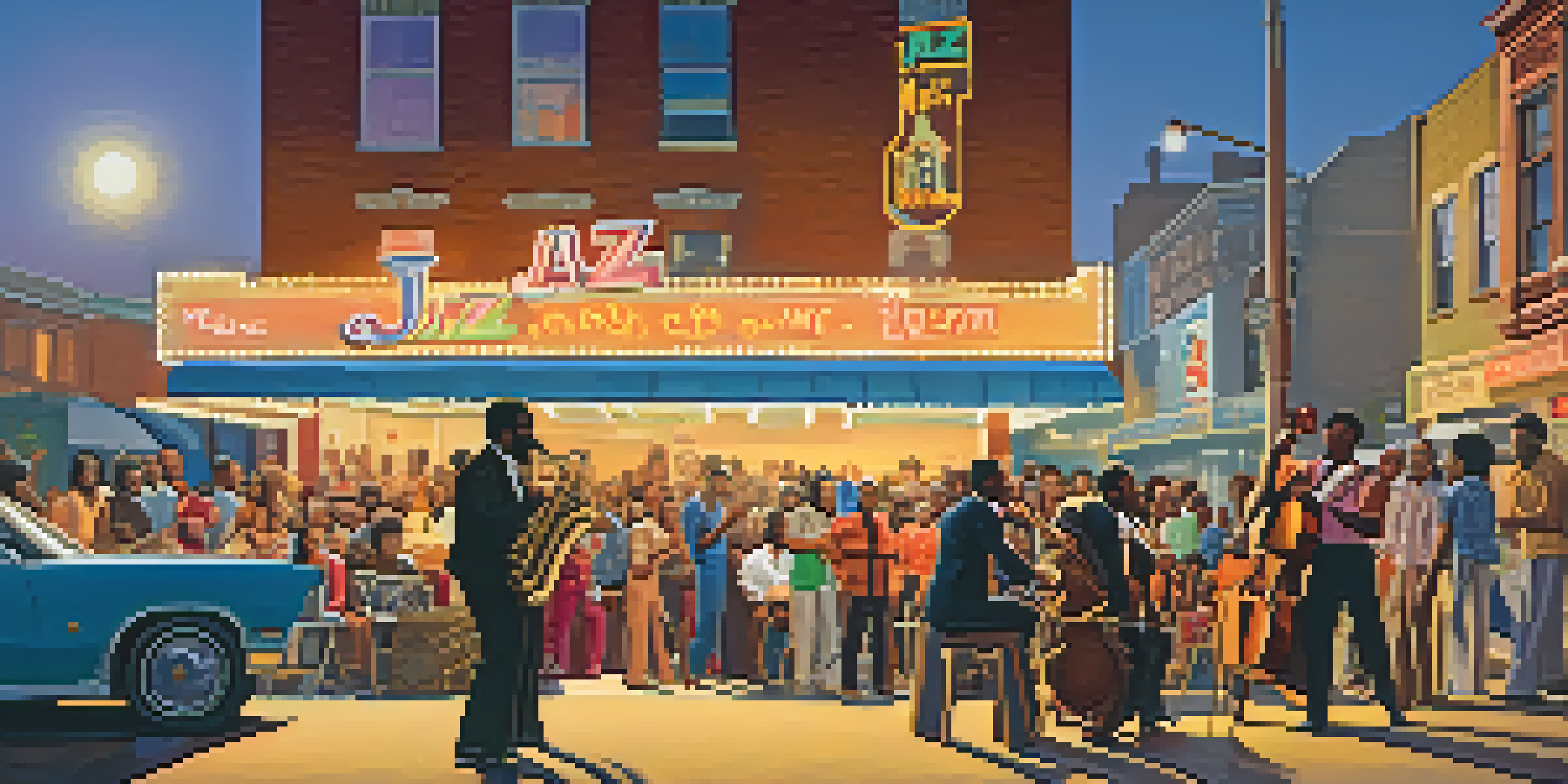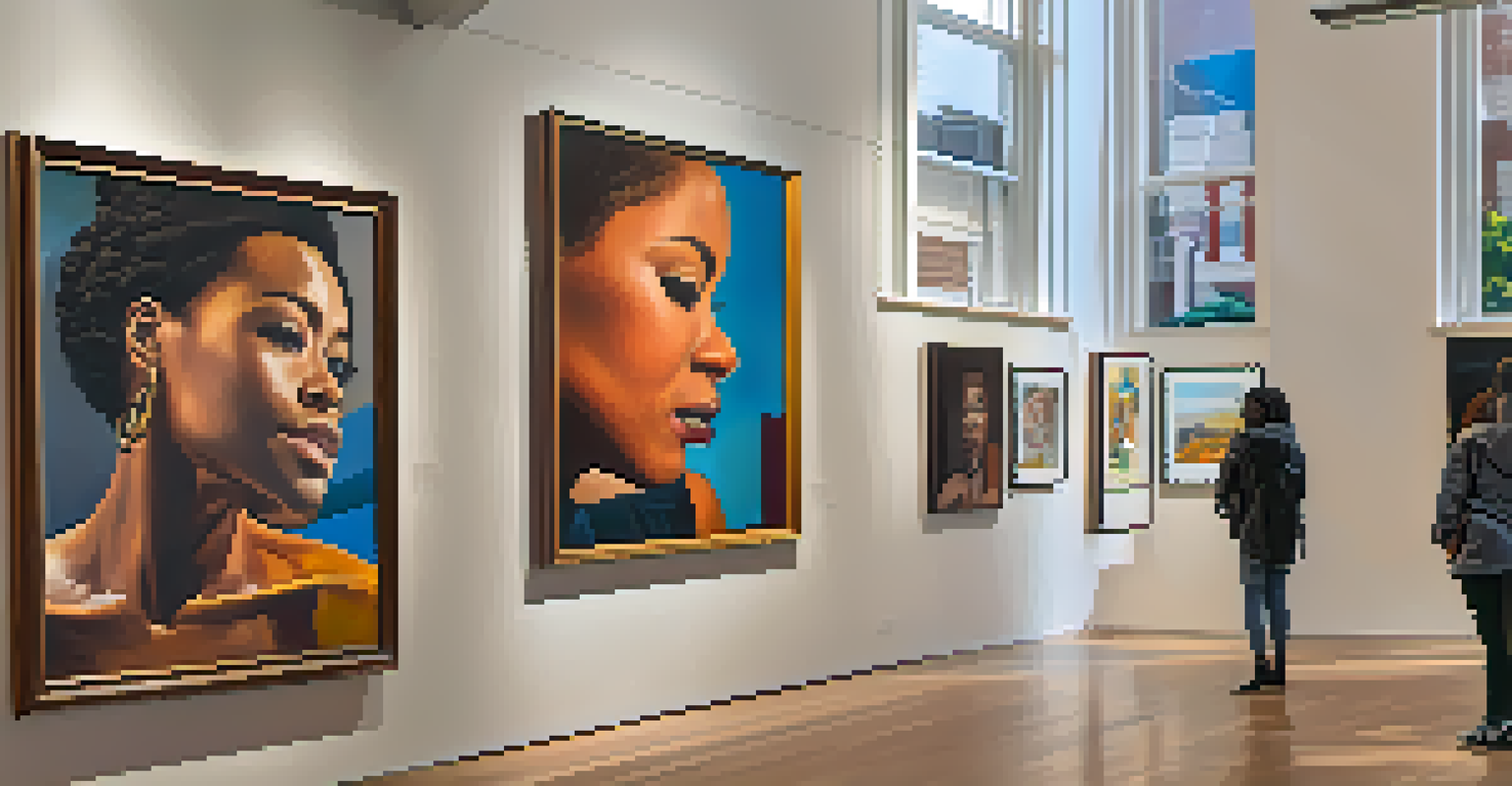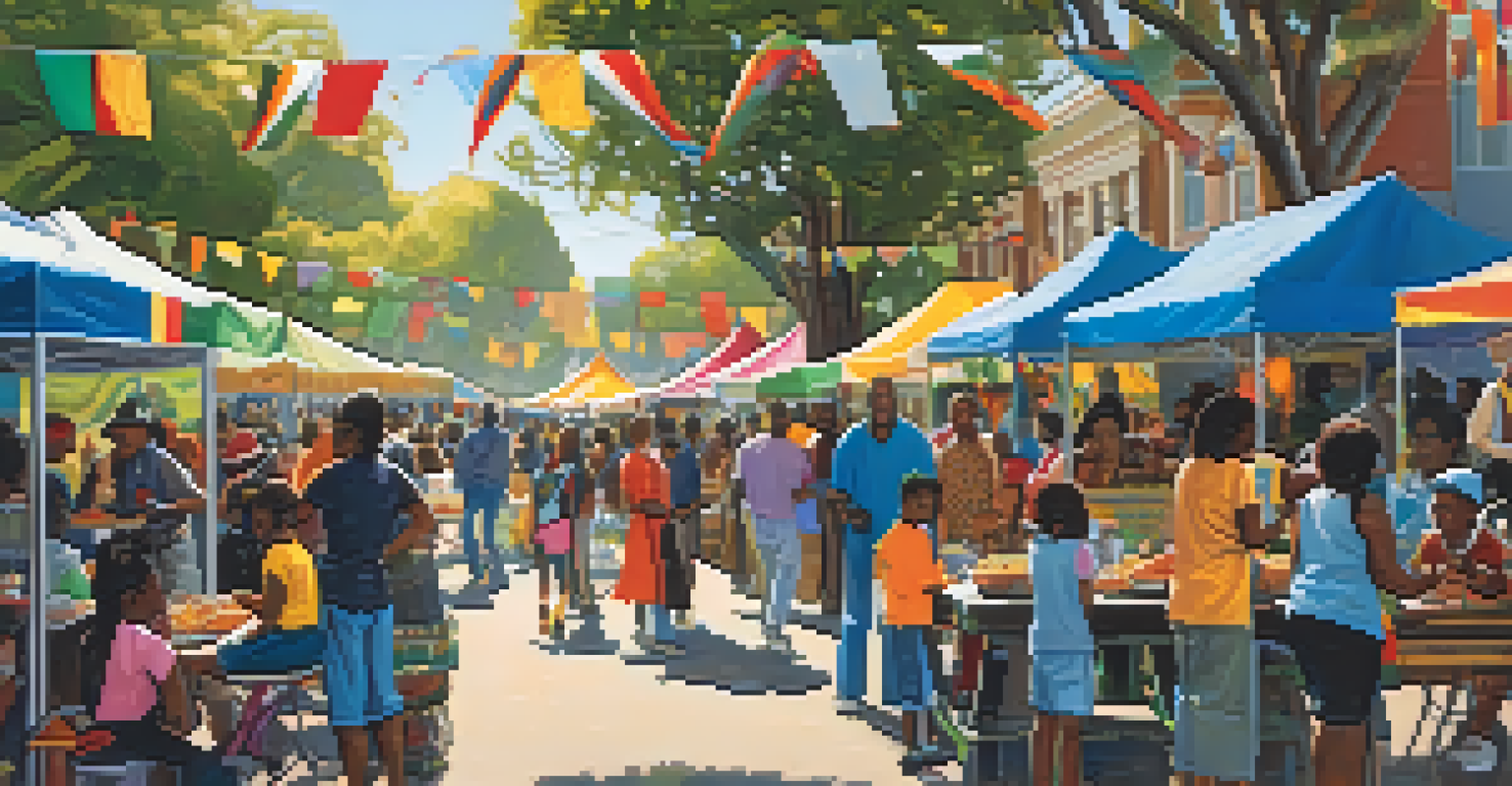The Evolution of African American Culture in San Francisco

Early African American Presence in San Francisco
The story of African Americans in San Francisco begins in the mid-19th century, when the Gold Rush attracted thousands seeking fortune and a new life. Among these hopefuls were free Black men and women, who contributed to the city’s early economy, often working as laborers or in service industries. This initial wave set the stage for a vibrant community that would grow and evolve over the decades.
History is not a mere record of events; it is the story of people who lived through those events and shaped the world around them.
As the city expanded, so did the African American population, who became integral to San Francisco's social and cultural fabric. They established churches, social clubs, and businesses that not only served their community but also enriched the city as a whole. This early foundation fostered a sense of identity and solidarity, crucial for the challenges that lay ahead.
The struggles for equality and recognition began almost immediately, as discriminatory practices and racial tensions emerged. Yet, the resilience of the early African American settlers laid the groundwork for future generations to continue fighting for their rights and place in society.
The Impact of the Great Migration
The Great Migration, which took place from the 1910s to the 1970s, saw millions of African Americans moving from the rural South to urban areas in the North and West, including San Francisco. This movement brought a significant influx of new residents who were eager to escape oppressive conditions and seek better opportunities. The cultural landscape of San Francisco began to shift dramatically as these newcomers infused their traditions, music, and art into the city.

With this migration came the establishment of vibrant neighborhoods, most notably the Fillmore District, which became a cultural hub for African American life. The area thrived with jazz clubs, theaters, and businesses, showcasing the talents of artists and musicians who would leave a lasting legacy. This rich cultural scene attracted visitors from all over, solidifying San Francisco's reputation as a center for African American culture.
Rich African American History
African Americans have significantly shaped San Francisco's cultural and social landscape since the mid-19th century.
However, the Great Migration also brought challenges, as competition for jobs and housing intensified, leading to racial tensions. Despite these difficulties, the community's spirit prevailed, and their contributions to the arts and civil rights movements became increasingly prominent.
Civil Rights Movement and Local Activism
The Civil Rights Movement of the 1960s galvanized many African Americans in San Francisco, prompting them to take a stand for equality and justice. Local leaders and organizations emerged, advocating for civil rights and fighting against systemic racism. This activism played a crucial role in raising awareness and pushing for policy changes that would benefit the community.
Culture is the widening of the mind and of the spirit.
One notable figure was Dr. Carlton B. Goodlett, a prominent civil rights activist and publisher, who used his platform to address issues of racial inequality and injustice. His newspaper, the San Francisco Sun-Reporter, became a voice for the African American community, highlighting their struggles and achievements. Through grassroots efforts and community organizing, activists in San Francisco contributed to the broader national movement.
The impact of these efforts was felt not only locally but also nationally, as San Francisco became a beacon of hope and change. The collaboration among various civil rights groups fostered a sense of unity and determination, propelling the community forward in the fight for equality.
Cultural Renaissance in the 1970s and 1980s
During the 1970s and 1980s, San Francisco experienced a cultural renaissance that highlighted the contributions of African Americans in the arts, music, and literature. This period saw a resurgence of pride in Black identity, with artists and performers using their platforms to celebrate their heritage. Events such as the Black Expo showcased the richness of African American culture, drawing attention to local talents.
Musicians like the legendary jazz artists and soul singers made significant contributions to the music scene, while visual artists reflected the community's experiences and aspirations through their work. The Fillmore District, once a cultural epicenter, became a focal point for this artistic expression, with galleries and performance spaces emerging to celebrate the Black experience.
Cultural Contributions Continue
Today, the African American community in San Francisco remains vibrant, influencing the arts and cultural scene through music, literature, and festivals.
This cultural explosion not only enriched the local community but also attracted a wider audience, helping to foster understanding and appreciation for African American culture. The legacy of this renaissance continues to influence the artistic landscape of San Francisco today.
Challenges of Gentrification and Displacement
As the tech boom took hold in the late 1990s and early 2000s, San Francisco faced significant challenges related to gentrification and displacement, particularly within the African American community. Long-time residents found it increasingly difficult to afford housing in their neighborhoods, leading to a decline in the population and cultural heritage. The Fillmore District, once a vibrant center of Black culture, saw many families forced to relocate due to rising rents and property values.
Community organizations and activists have worked tirelessly to combat these trends, advocating for affordable housing and policies that protect residents from displacement. Initiatives aimed at preserving cultural landmarks and celebrating the contributions of African Americans are essential in the fight to maintain the community's identity amidst rapid changes.
Despite these challenges, there remains a strong sense of resilience and determination among the community members. Many continue to fight for their place in the city, emphasizing the importance of heritage and cultural preservation in the face of adversity.
Modern Contributions to Arts and Culture
Today, African Americans in San Francisco continue to make significant contributions to the city’s arts and culture. From music festivals like the Fillmore Jazz Festival to literary events that celebrate Black authors, the community remains vibrant and engaged. These events not only showcase local talent but also foster connections among diverse groups, enriching the city's cultural tapestry.
Contemporary artists and musicians draw inspiration from their predecessors while incorporating modern themes that resonate with today's audience. The blending of traditional and contemporary styles creates a unique artistic expression that reflects the complexities of the African American experience in San Francisco.
Challenges of Displacement
Gentrification and rising housing costs pose serious challenges to the preservation of African American culture and community identity in San Francisco.
The impact of these contributions extends beyond the local community, influencing artists and movements across the nation. As the city evolves, the spirit and creativity of African Americans continue to thrive, ensuring their legacy is woven into the fabric of San Francisco’s identity.
Looking Ahead: The Future of African American Culture
As San Francisco continues to change, the future of African American culture in the city will depend on the collective efforts of the community and its allies. Emphasizing the importance of representation and inclusion, residents are advocating for policies that support cultural preservation and equitable development. This proactive approach aims to ensure that the voices and experiences of African Americans are not only heard but celebrated.
Education and awareness play a pivotal role in fostering understanding between communities. Initiatives that promote African American history and culture in schools and public spaces can help bridge gaps and encourage a more inclusive narrative. By sharing their stories, the community can inspire future generations to appreciate and continue this rich cultural legacy.

Looking ahead, the resilience and creativity of African Americans in San Francisco will undoubtedly shape the city's culture for years to come. As they navigate the complexities of modern life, their contributions will remain a vital part of San Francisco’s unique identity, ensuring that the evolution of their culture continues to thrive.